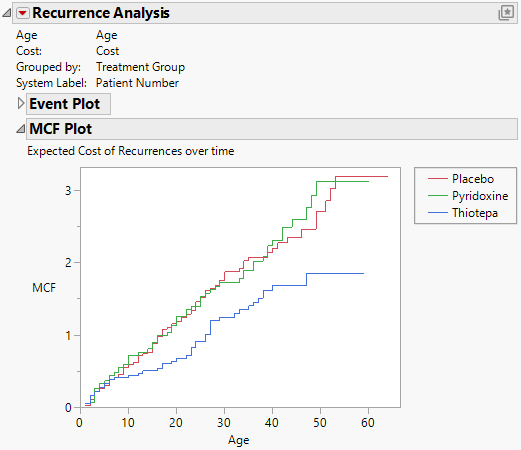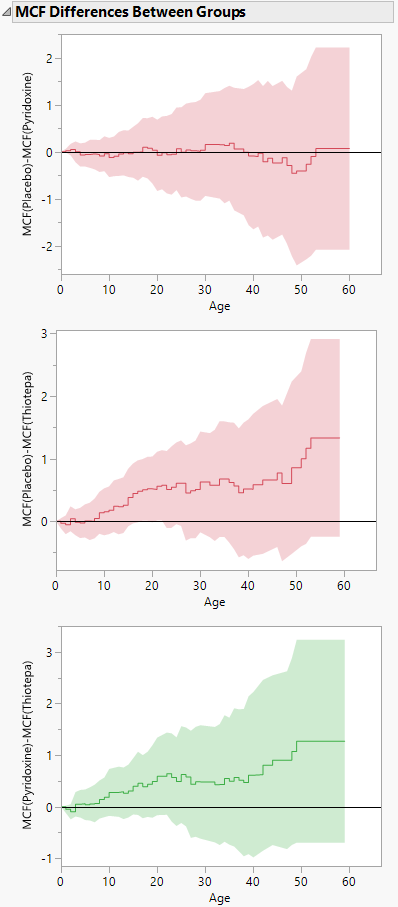Example of Recurrence Analysis with a Cost Column
This example analyzes data on cancerous bladder tumor recurrences from the Veteran’s Administration Co-operative Urological Research Group. The analysis explores the progression of the disease and whether there is a difference among three treatments.
1. Select Help > Sample Data Folder and open Reliability/Bladder Cancer.jmp.
2. Select Analyze > Reliability and Survival > Recurrence Analysis.
3. Select Age and click Y, Age, Event Timestamp.
4. Select Patient Number and click Label, System ID.
5. Select Cost and click Cost.
6. Select Treatment Group and click Grouping.
7. Click OK.
8. Click the gray disclosure icon beside Event Plot.
Figure 7.7 shows the MCF plots for the three treatments.
Figure 7.7 Bladder Cancer MCF Plot
Note that all three of the MCF curves are essentially straight lines. The slopes (rates of recurrence) are therefore constant over time, implying that patients do not seem to get better or worse as the disease progresses.
9. To examine if there are differences among the treatments, click the Recurrence Analysis red triangle and select Plot MCF Differences.
Figure 7.8 MCF Differences
To determine whether there is a statistically significant difference between treatments, examine the confidence limits on the differences plot. If the limits do not include zero, the treatments are convincingly different. The graphs in Figure 7.8 show there is no significant difference among the treatments.

